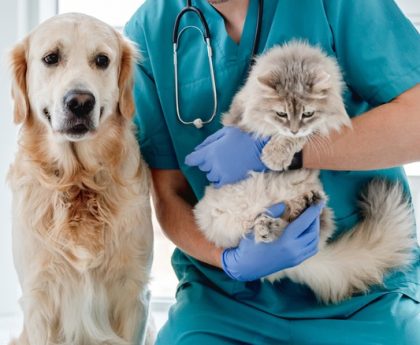When pet owners need to be away from home, whether for a vacation, business trip, or an emergency, the safety and well-being of their furry, feathered, or scaled companions is a primary concern. Boarding facilities provide a vital service for pet parents, offering a secure and nurturing environment for their beloved animals. But how do these establishments ensure the safety of boarded pets? Let’s look into the practices, protocols, and partnerships that keep your pets safe while you’re away.
1. Comprehensive Admission Screening
Before any pet is admitted into a facility, thorough screening processes are in place to ensure they’re a good fit for the communal environment. This involves:
-
Vaccination Requirements: To protect all pets within the facility, up-to-date vaccinations are a must. This includes rabies, distemper, and kennel cough for dogs and FVRCP for cats, among others.
-
Behavioral Assessments: Understanding a pet’s temperament helps staff manage its care better and ensures it can safely interact with other pets if applicable.
-
Health Checks: A preliminary health assessment either by the facility’s veterinarian or a trusted external provider ensures the pet is free from contagious diseases and is fit for stay.
2. Facility Design and Maintenance
The architectural design and maintenance of the boarding facility also play crucial roles in ensuring pet safety. Features include:
-
Secure Enclosures: Proper fencing and secure enclosures prevent escape attempts and protect pets from external threats.
-
Climate Control: Adequate heating, ventilation, and air conditioning (HVAC) systems keep pets comfortable regardless of the weather outside.
-
Sanitation: Regular cleaning and disinfection protocols minimize the risk of disease transmission among boarded pets.
3. Trained and Compassionate Staff
The heart and soul of any pet boarding facility are its staff. Ensuring they are well-trained in animal care and first aid, as well as passionate about their well-being, is crucial. Staff responsibilities include:
-
Monitoring pets for any signs of distress or illness.
-
Regular feeding, hydration, and medication management are provided as prescribed.
-
Facilitating exercise and playtime to keep pets active and engaged.
4. Personalized Care and Attention
Every pet is unique, with its personality, preferences, and needs. Tailoring care to meet these individual requirements ensures a happier, healthier stay. This includes:
-
Adjusting diets and feeding schedules according to the pet’s home routine.
-
Providing favorite toys or blankets from home to comfort pets in a new environment.
-
Offering one-on-one attention or group play based on the pet’s socialization needs.
5. Partnerships with Veterinary Services
A key aspect of ensuring boarded pets’ safety is the facility’s relationship with veterinary services. This ensures that pets have access to high-quality medical care whenever needed. In the event of a health issue, facilities often have protocols in place for immediate consultation or treatment.
For instance, facilities might partner with a veterinary pharmacy in Jackson, TN, ensuring that any required medication is readily available and precisely dosed for each pet’s specific needs. This attention to detail in medication management is crucial for the well-being of pets with chronic conditions or those needing ongoing treatment.
6. Detailed Emergency Preparedness
In the unlikely event of an emergency, having a well-thought-out plan is essential. This encompasses:
-
Immediate access to veterinary care, whether on-site or through a nearby clinic.
-
Evacuation protocols for natural disasters or fires, ensuring all pets can be safely removed from the facility.
-
Adequate first aid supplies and training among staff to handle minor injuries or health issues.
7. Advanced Care for Special Needs
Some pets require more than just routine care — they might need specialized medical attention. This is where the expertise of a veterinary internist becomes invaluable. Facilities collaborate with these specialists to address complex health issues, from internal diseases to chronic conditions. The availability of vet internal medicine ensures that pets with significant health problems receive the care they need, even when away from home.
8. Robust Communication Protocols
Keeping pet parents informed is another layer of ensuring peace of mind and safety. Effective communication protocols include:
-
Regular updates through texts, emails, or a dedicated app, providing photos and reports on the pet’s status.
-
Clear information on who to contact in case of questions or emergencies.
-
Feedback sessions post-stay allow pet owners to share their experiences and any concerns they might have encountered.
Benefits of Professional Pet Boarding
Beyond the primary concern of safety, professional pet boarding offers several advantages:
-
Professional Care: Pets are supervised by experienced staff trained to spot and address any health or behavior issues.
-
Socialization: Depending on the pet and the facility, boarding can provide valuable opportunities for social interaction with other animals.
-
Peace of Mind: Knowing that your pet is in a safe, supportive environment allows you to focus on your obligations or enjoy your time away without worry.
Choosing the Right Facility
When considering a boarding facility, it’s essential to research and visit potential options. Look for facilities that transparently showcase their pet boarding services, emphasizing safety, individualized care, and professional staff. A visit can also provide:
-
Insight into the cleanliness of the environment
-
The demeanor of the staff
-
The overall happiness of the pets staying there
Ask about their emergency plans, staff qualifications, and daily routines to ensure they align with your pet’s needs and your expectations.
Final Thoughts
Leaving a pet behind can be stressful, both for pet parents and the pets themselves. However, choosing the right boarding facility, one that prioritizes safety through rigorous screening, facility design, staff training, and veterinary partnerships, can ease this burden. By understanding what makes a boarding facility safe and what to look for, you can ensure your pet will be well-cared for in your absence, providing peace of mind for everyone involved.





